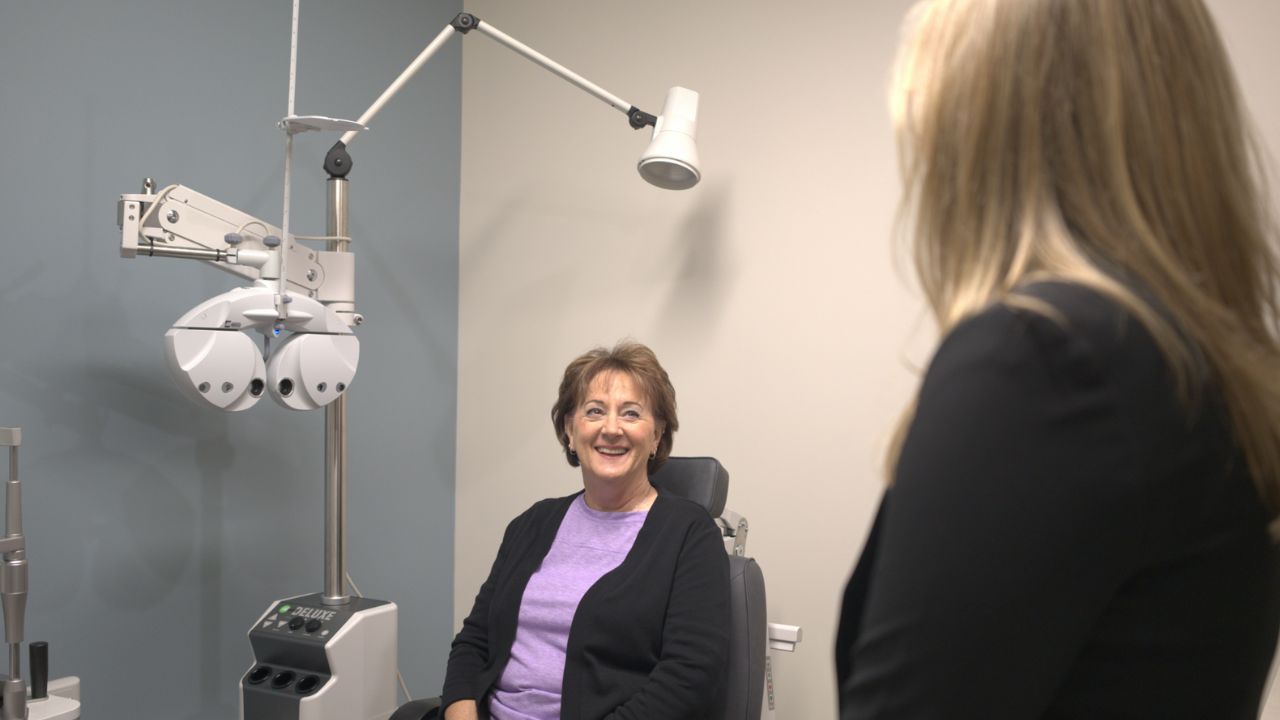Glaucoma is one of the leading causes of blindness worldwide. It’s a condition that damages the eye’s optic nerve, often due to high eye pressure. This blog post will delve into the importance of early detection and the treatment options available for glaucoma, including SLT laser treatment. At VisionQuest Eyecare, we prioritize your eye health and are dedicated to providing comprehensive care to manage and treat glaucoma effectively.
What is Glaucoma?
Glaucoma is a group of eye conditions that damage the optic nerve, which is essential for good vision. This damage is often caused by abnormally high pressure in your eye. Over time, increased pressure can lead to a lack of blood flow which can erode the optic nerve tissue, which may lead to vision loss or even blindness. Glaucoma is particularly insidious because it often presents no symptoms until significant vision loss has occurred.
Types of Glaucoma
Primary Open-Angle Glaucoma
This is the most common form of glaucoma. It develops gradually, where the eye’s drainage canals become clogged over time, leading to increased eye pressure. This type of glaucoma often goes unnoticed until significant vision loss occurs, making regular eye exams crucial for early detection.
Angle-Closure Glaucoma
Also known as closed-angle or narrow-angle glaucoma, this type is less common but can occur suddenly (acute) or gradually (chronic). It happens when the iris is very close to the drainage angle in the eye, which can block the drainage canals and increase eye pressure rapidly.
Normal-Tension Glaucoma
In this type, optic nerve damage occurs even though eye pressure is within the normal range. It’s believed to be related to poor blood flow to the optic nerve.
Congenital Glaucoma
This type occurs in infants and young children. It’s often inherited and results from abnormal development of the eye’s drainage system.
Risk Factors for Glaucoma
Several factors can increase the risk of developing glaucoma:
- Age: People over 60 are at increased risk.
- Ethnic Background: African Americans and Hispanics have a higher risk of developing glaucoma.
- Family History: Having a family history of glaucoma increases your risk.
- Medical Conditions: Conditions like diabetes, high blood pressure, and heart disease can elevate the risk.
- Eye Conditions: Severe eye injuries, retinal detachment, tumors, and eye inflammations can contribute to glaucoma.
- Long-term Use of Corticosteroid Medications: Especially when administered as eye drops.
Importance of Early Detection
Early detection of glaucoma is critical because it allows for early intervention, which can slow or prevent further vision loss. Regular comprehensive eye exams at VisionQuest Eyecare can help detect glaucoma in its early stages. During an eye exam, our optometrists will check your eye pressure, inspect the drainage angle of your eye, examine your optic nerve for damage, test your peripheral vision, and take a photograph or computer measurement of your optic nerve.
Treatment Options for Glaucoma
While there’s no cure for glaucoma, treatments can significantly slow its progression. The primary goals of treatment are to lower eye pressure and prevent damage to the optic nerve.
Medications
Prescription eye drops are the most common initial treatment. These medications either reduce the production of fluid in your eye or improve how fluid drains from your eye. Some common types include prostaglandins, beta-blockers, alpha-adrenergic agonists, and carbonic anhydrase inhibitors.
Laser Therapy
Laser treatments can help fluid drain from the eye. There are different types of laser surgery for glaucoma, including:
- Trabeculoplasty: Used for open-angle glaucoma. It helps drain fluid from the eye.
- Iridotomy: Used for angle-closure glaucoma. It creates a tiny hole in the iris to allow fluid to flow more freely.
- Cyclophotocoagulation: Reduces the production of fluid in the eye.
SLT Laser Treatment
Selective Laser Trabeculoplasty (SLT) is a popular and effective treatment for open-angle glaucoma. SLT uses laser light to target specific cells in the drainage canals of the eye, promoting better fluid outflow and reducing intraocular pressure. This treatment is especially beneficial because it is less invasive than traditional surgery and can be repeated if necessary. SLT is often considered when medications alone do not sufficiently control eye pressure or if patients experience significant side effects from medications.
Benefits of SLT
- Non-invasive: SLT is a laser procedure that does not require incisions.
- Repeatable: Unlike some other laser treatments, SLT can be repeated if necessary.
- Minimal Side Effects: SLT generally has fewer side effects compared to medications and more invasive surgical options.
- Quick Recovery: The recovery time for SLT is typically short, allowing patients to resume their normal activities quickly.
Surgery
If medications and laser therapy do not effectively control eye pressure, surgical procedures may be necessary. These include:
- Trabeculectomy: Creating a new drainage pathway for the fluid.
- Drainage Implants: Inserting a small tube to help drain fluid from the eye.
- Minimally Invasive Glaucoma Surgery (MIGS): These are newer surgical techniques designed to reduce eye pressure with fewer complications and faster recovery times.
VisionQuest Eyecare: Your Partner in Eye Health
At VisionQuest Eyecare, we understand the importance of early detection and effective treatment of glaucoma. Our team of experienced optometrists in Greenwood and Fishers, Indiana, is dedicated to providing personalized care tailored to each patient’s needs. We use advanced diagnostic technology to detect glaucoma early and offer a range of treatment options, including SLT laser treatment, to manage the condition and protect your vision.
Schedule an Eye Exam Today
Regular eye exams are the best way to detect glaucoma early. At VisionQuest Eyecare, we recommend comprehensive eye exams every one to two years, especially if you are at higher risk for glaucoma. During your visit, our optometrists will perform a series of tests to assess your eye health and check for signs of glaucoma.
Early detection and treatment are essential to managing glaucoma effectively and preserving your vision. Don’t wait until symptoms appear. Schedule an eye exam today at VisionQuest Eyecare in Greenwood or Fishers, Indiana. Visit our website to book your appointment online or call us directly. Your vision is our priority, and we are here to help you maintain healthy eyes for life.
Glaucoma Detection and Treatment
Glaucoma is a serious eye condition that requires prompt attention and ongoing management. By understanding the importance of early detection and the available treatment options, including SLT laser treatment, you can take proactive steps to protect your vision. Trust VisionQuest Eyecare to provide comprehensive, personalized care for all your eye health needs. With our expert team and state-of-the-art technology, we are committed to helping you maintain optimal eye health and prevent vision loss from glaucoma. Schedule your eye exam today and take the first step towards preserving your vision.

Dr. Chris Browning is a Greenwood native, who has been serving the community through glaucoma care and myopia management. He studied at Indiana University Bloomington and the Indiana University School of Optometry. As he has severe nearsightedness himself, Dr. Browning is passionate about helping others to achieve excellent vision.



